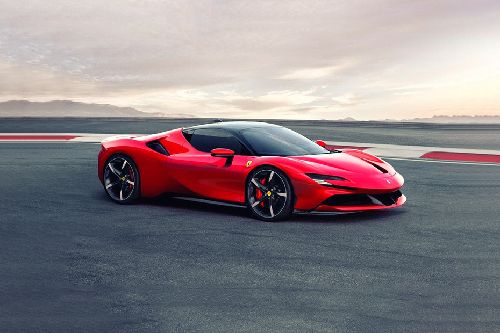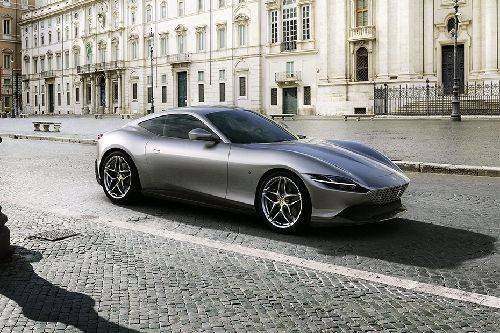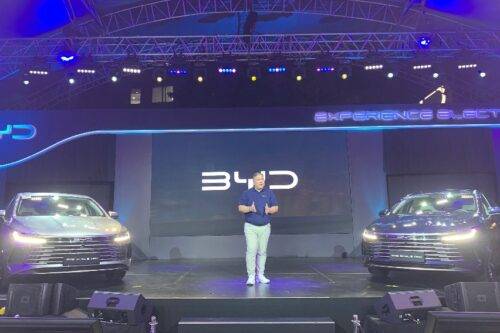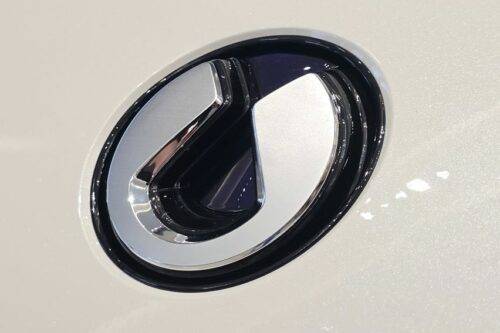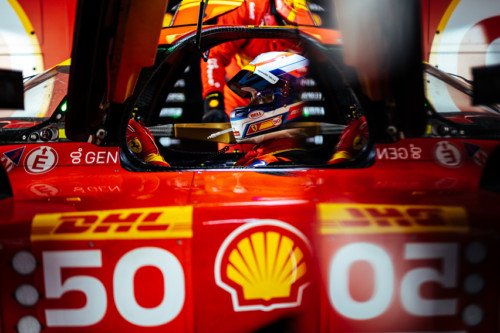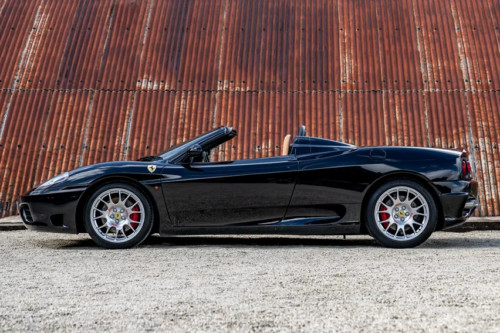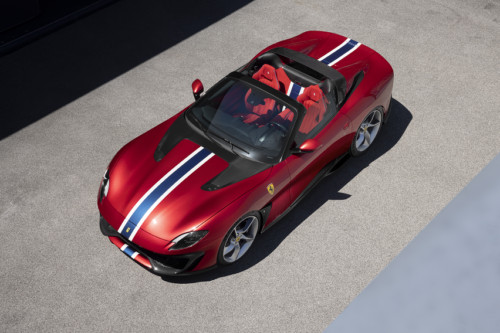Ferrari 296 GT3 represents brand’s future in GT racing

MANILA: The Ferrari 296 GT3 is seen as the Prancing Horse's entry into the future of GT racing, which has historically featured the strongest customer relationships and the most innovative solutions. The 296 GTB, the latest iteration of the brand's two-seater mid-rear-engined sports berlinetta concept, was the root from which the 296 GT3 was born.
KEY TAKEAWAYS
What powers the Ferrari 296 GT3?
The Ferrari 296 GT3 is powered by a 120-degree turbocharged six-cylinder engine that produces 600hp and 710Nm of torque.Where will the Ferrari 296 GT3 make its debut?
The Ferrari 196 GT3 will debut at 2023 Daytona 24 Hours.Ferrari decided to build the 296 GT3 as an innovative project, both on and off the track, to carry on a winning legacy that dates back to 1949, when the 166 MM won the 24 Hours of Le Mans. The needs of teams, professional drivers, and gentlemen drivers, on whom Ferrari has always concentrated, are being met by the new concept. Conforming to the new GT3 regulations, this car has been thoroughly designed in every detail and from every angle.
Even though it lacks the electric motor seen in the 296 GTB due to technical requirements, the 296 GT3 represents the return to the track of a six-cylinder Ferrari. The V6 combustion engine of the 296 GT3 was modified to a 120-degree vee configuration with evenly spaced firings. This, along with the placement of the turbos inside the vee, are based on its road-going twin. All of these factors contribute significantly to compactness, a lower center of gravity, and reduced mass, as well as the ability to generate extremely high power levels. To benefit from a lower center of gravity and torsional rigidity that is about 10% higher than in the 488 GT3, the engine, which has always been at the core of Ferrari's designs, is moved further forward and lower down than in the road version.
The engine is lighter and more compact as a result of the architecture's effectiveness with the firing order, integration of the intake manifolds, and engine mounts on the intake sides of the cylinder heads. The volume reduction improves the fluid dynamics inside, increasing intake efficiency.
The internal fluid dynamics of the engine and the specific components used for the track version of the power unit were all designed and fine-tuned by Ferrari engineers in collaboration with those of its partners. They sought to offer unmatched reliability, performance, and drivability for both “Sprint” and “Endurance” events. They made every effort to substantially lower consumption for this type of competition without compromising performance, seeking for more adaptable race strategies and shorter intervention times. For instance, the alternator is mounted to the gearbox to increase the unit's stiffness and compactness and to make it easier for technicians to access.
The 296 GT3 features a new, specially designed gearbox. For better aerodynamics and weight distribution, the designers used a single-disc clutch unit with six gears that are positioned crosswise. The gear change is electrically operated, and the clutch is now electronic and controlled from the steering wheel, rather than mechanical through the foot pedal. The Xtrac gearbox's low weight, which improved performance, was made possible by downsizing the components and using high-quality materials.
With the collaboration between Centro Stile, aerodynamicists, and designers, Ferrari's future in GT racing is flowing in form, enclosing the volumes of the 296 GTB and reinventing them to fit the requirements of the track and performance. This is the reason why the car's design has remained connected to the production model even without the aerodynamic elements or features unique to the racing variant.
In order to improve handling and drivability, Ferrari engineers were able to design an aerodynamic configuration inside the homologation performance window by lowering ride height sensitivity. A 20% increase in downforce over the previous generation was achieved because of the meticulous and thorough work on the shapes. From this perspective, the 296 GT3 coexists with the air surrounding it, taking advantage of it to maximize grip and handling for both new and experienced drivers. The designers' task was to provide an outstanding balance for the benefit of drivability and driver confidence while limiting the car's sensitivity to aerodynamic forces.
To maximize performance and make it resilient in various racing conditions, every component, from the body to the wing appendages, was meticulously engineered under a variety of operating conditions and in mutual aerodynamic interaction. The 296 GT3 stands out, thanks to a sleek design that aims to produce the least amount of drag.
The cabin design prioritizes intuitiveness, visibility, and accessibility without compromising important factors like safety and comfort. Performance in endurance racing is influenced by these characteristics, especially for gentlemen drivers. The cabin underwent a complete redesign over the 488 GT3 in response to feedback from factory drivers and customers. The result is a cockpit that enables the driver to quickly and easily find the ideal driving position while keeping the key controls close at hand. The redesigned Formula 1 single seater-inspired steering wheel now houses several controls, while the Sabelt seat's position offers the best visibility during both day and night. Additionally, it increases comfort for drivers by allowing them to adjust their position in the vehicle with the adjustable steering and pedals. The air-conditioning system and airflow inside the cabin were designed to provide proper ventilation in all conditions and help the driver in maintaining focus throughout each stage of a race.
The 296 GT3 chassis is completely new and made of aluminum. In addition to being very easy and fun to drive, the 296 GT3 can boost performance and repeatability by quickly and safely utilizing the grip potential of the tires without compromising their integrity. This is a result of the chassis' exceptional lightness, which in the 296 GT3 also enables better and more efficient ballast management. The safety structure has been meticulously designed using the most advanced simulations, cutting-edge technologies, and innovative research, particularly in alloys and materials.
The 296 GT3 has a longer wheelbase than its road-going version and a different suspension setup than the 488 GT3, with specialized kinematics and structures. The front and rear suspensions' double wishbone arms were built to provide maximum grip even at high speeds while minimizing stress on the tires for improved tire life, performance, and dependability. The suspension, similar to the anti-roll bars, has the widest range of configurations to give drivers the best setup. Additionally, the braking system was improved and modified with new calipers and discs (now 400 mm at the front). Rotiform has created a whole new, forged wheel homologated specifically for the 296 GT3. The new Rotiform design will be the only wheel used for all factory Ferrari 296 GT3 professional level race cars as part of the agreement.
Ferrari's engineers concentrated on accelerating track operations on the car both before and during the race when creating the 296 GT3. From this perspective, the 296 GT3's setup is easier to adjust than the prior model's, thanks to more easily accessible mechanical and elastic components. To reduce the time needed for intervention on the car, operations related to checks on the engine or major accessory systems were also drastically improved. The new Ferrari also stands out from its competitors in terms of replacing significant parts of the vehicle. Due to a number of devices and solutions, the front and rear sections can be switched in a matter of seconds in the event of aerodynamic or performance damage.
The 296 GT3 was created with extensive use in mind, typical of the "Pro" classes where winning is the ultimate goal, and for gentlemen drivers, for whom racing is mostly about having fun. 2020 saw the evolution of the project, and the first CFD simulations and simulator models were implemented. After that, the engine was bench-tuned, the rigidity of the chassis was tested, and indoor testing was used to determine the car's aerodynamic shape in the wind tunnel. Finally, the vehicle passed the endurance testing on the 4WD Dyno at Maranello. The new Ferrari has traveled tens of thousands of kilometers since the first test at the Fiorano track last April 12, prepping it for racing, the toughest challenge of all.
Photos from Ferrari
Also read: Ferrari’s 75th anniversary celebration in Goodwood highlighted by 5 UK dynamic debuts
Sell your car at the best price
 Verified and genuine buyers
Verified and genuine buyers
Ferrari Car Models
PIMS 2024
- Latest
- Popular
You might also be interested in
- News
- Featured Stories
- Popular
Latest Ferrari Car Videos on Zigwheels

Ferrari Car Articles From Carmudi
- journal

